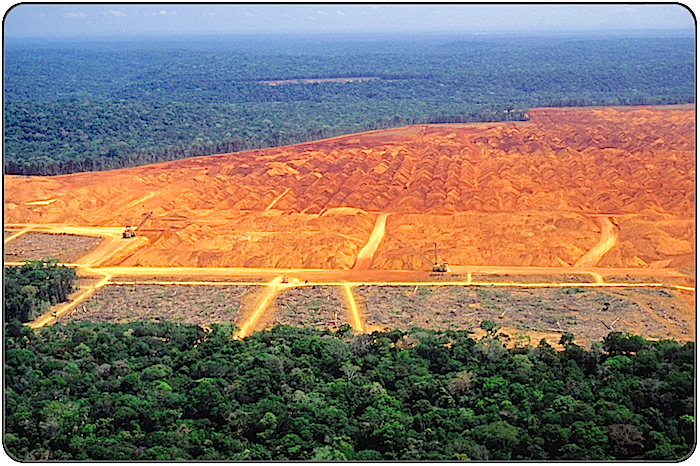Brazil and Bolivia account for 90% of the deforested Amazon rainforest that is at a point of no possibility of recovery.
Environmental destruction in the Amazon rainforest is so extensive that parts of the forest have reached a point of no return. In other words, they are in a deforestation crisis never seen before, according to the report “Amazonía a Contrarreloj.”
The report, prepared by scientists from the Amazon Georeferenced Socio-environmental Information Network (RAISG), makes new data available to world leaders on how to protect the natural remnant of the forest, thru 2025.
“This point of no return is not a future scenario, but a present reality in some areas of the region,” the report states.
Brazil and Bolivia account for 90% of the completely deforested and degraded forest. “As a result, savannization is developing in both countries,” the report adds.
Savannization means that the former Amazon, full of lush forests and unique species, has disappeared, giving way to an arid savannah with small or medium-sized trees.
Deforestation country by country
Regionally, almost 26% of the Amazon rainforest, which stretches from Guyana to Bolivia, has high rates of deforestation and degradation.
But the remaining 74%—or 629 million hectares—is still standing and requires immediate attention.
“Preserving this remaining percentage of the Amazon depends on the one hand, on the knowledge systems of indigenous peoples, and on the other, on a global financial strategy,” says Alicia Guzmán, an Ecuadorian scientist in charge of the study.
According to Guzmán, the Amazonian countries need the international community to assume co-responsibility for protecting the jungle.
“Without knowing it, we eat, transport ourselves and wear products that destroy the Amazon. We cannot afford to lose one more hectare,” adds Guzmán.
Among the nine countries that make up the Amazon basin, Brazil is the most impacted by deforestation, with 34%.
Two small countries, Suriname and French Guiana, have nearly 50% of their Amazon rainforest intact.
In the case of Ecuador, 16% of its portion of the rainforest has been destroyed.
Regarding the causes of the current situation, the report indicates that the livestock and agricultural industries are the cause of 85% of Amazon deforestation. That is, the felling of forest to make way for farmland and animal farms, a practice that began in 1985.
Then, 66% of the forest is threatened by the fixed pressure of industries such as oil, mining and more than 800 hydroelectric plants planned or operating.
Oil blocks cover 9.4% of the Amazon surface, and in Ecuador, this oil exploitation is the main threat, according to the report.
Proposals to save the jungle
Almost half of the Amazon is protected by native indigenous peoples, and according to the report, there is no deforestation on the land where these communities live.
The problem, according to scientists like Guzmán, is that the indigenous people lack the resources to protect a larger proportion of the forest.
For this reason, the main proposal of the report is the cancellation of the debt that Latin American countries maintain with multilateral organizations, provided that they commit to protecting the forest.
“We have a unique opportunity to forgive existing debts in exchange for commitments to end industrial extraction, and to promote environmental protections in territories protected by indigenous groups,” the report says.
The scientific authors of the report conclude a total of 13 solutions to save the Amazon, some of the most important are:
- Suspend licenses and financing of new mining, agricultural, ranching and oil projects.
- Increase transparency in the logistics chain of companies that already operate in the area.
- New forms of government that allow the representation and recognition of indigenous peoples in the Amazon.


0 Comments